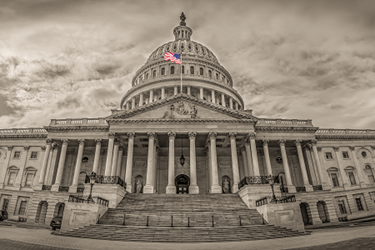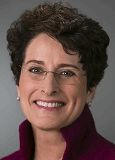Real-World Evidence & The 21st Century Cures Act — What You Need To Know

When the Clinical Leader team attended the 2017 DIA Annual Meeting in June, the topic we heard discussed more than any other was real-world evidence (RWE) — that is, information about a drug that is collected outside of clinical trials. RWE is not a new concept, but there are good reasons for all the current attention being paid to it in the pharma industry. For one, the 21st Century Cures Act, enacted into law in December 2016, seeks to speed the FDA drug and medical device approval processes by shifting some of the evidentiary requirements, in certain instances, from clinical trials to post-market — in other words, to “the real world.”
For this and other reasons, RWE is an area that an increasing number of CROs have moved into. So we decided to reach out to top executives at four of the largest CROs to get their perspectives on RWE and its growing importance in the industry:
- Radek Wasiak, Ph.D., VP and GM, real-world evidence, Evidera
- David Thompson, Ph.D., SVP, real world evidence and insights, INC Research/inVentiv Health
- Nancy A. Dreyer, Ph.D., SVP and global chief, scientific affairs, QuintilesIMS Real-World Insights
- Haley Kaplowitz, Ph.D., executive director, safety, epidemiology, registries, and risk management, UBC
In part 1 of this three-part roundtable Q&A, these experts shared their insights on the recent rise in post approval studies — and some of the factors behind that rise. In this installment, they discuss what the 21st Century Cures Act means for RWE awareness and its earlier adoption in Phase 2 and 3 trials.
How much of a push is this RWE trend getting because of the language contained in the 21st Century Cures legislation?
 Dreyer: Although regulators have been using real-world data since the 1970s for approving new treatments for rare disease, the 21st Century Cures Act brings RWE to the forefront and is launching conversations the industry wasn’t having before.
Dreyer: Although regulators have been using real-world data since the 1970s for approving new treatments for rare disease, the 21st Century Cures Act brings RWE to the forefront and is launching conversations the industry wasn’t having before.
The Cures Act sends a clear signal to the biopharma community that the FDA is interested in real-world data, and that regulators will support its use in the right settings. It specifically calls attention to using RWE for label expansions. The challenge now is to come to agreement on the situations and conditions in which real-world data will be acceptable to regulators, including more granularity on the types of evidence. For example, while we hear frequent discussion about the value of pragmatic trials, there are many ways to make a trial pragmatic, including use of real-world outcomes and one or more active comparators. But issues about if and when blinding of treatment is needed have yet to be addressed. Similarly, there is growing interest in using existing data, like health insurance claims data and information from electronic health records (EHRs), for follow-up for in selected conditions. Imagine how transformational it would be to conduct a randomized trial where the only required clinical visit would be used to enroll, consent, and randomize patients, and the outcomes of interest would then be obtained from routine health records. While this streamlined approach would not work for every outcome of interest, there are many conditions for which patients regularly seek clinical evaluation and care, and the necessary information is already being recorded with enough clinical detail to support many research questions.
The 21st Century Cures Act is instructing us all to pay closer attention to where real-world data can be reliably used for decision-support. Biopharma companies interested in taking advantage of these new opportunities should have conversations with regulators early in the development process to discuss their plans for real world studies and to obtain feedback.
 Kaplowitz: Presumably, this legislation is having an impact; however, we don’t know of any data to support that at this time. The 21st Century Cures Act modified the FDA drug approval process. The intention is to expedite the process by easing the requirements on drug companies seeking FDA approval for new products, or for new indications for existing products. For example, under certain conditions, the act allows companies to provide “data summaries” and “real-world evidence” — such as observational studies, insurance claims data, patient input, pragmatic trials, and anecdotal data — rather than full, traditional randomized clinical trial results. This legislation was strongly supported by the pharmaceutical industry and essentially requires FDA to accept these approaches, necessitating greater understanding of the strengths, weaknesses, and appropriate analytical methods needed to make informed decisions.
Kaplowitz: Presumably, this legislation is having an impact; however, we don’t know of any data to support that at this time. The 21st Century Cures Act modified the FDA drug approval process. The intention is to expedite the process by easing the requirements on drug companies seeking FDA approval for new products, or for new indications for existing products. For example, under certain conditions, the act allows companies to provide “data summaries” and “real-world evidence” — such as observational studies, insurance claims data, patient input, pragmatic trials, and anecdotal data — rather than full, traditional randomized clinical trial results. This legislation was strongly supported by the pharmaceutical industry and essentially requires FDA to accept these approaches, necessitating greater understanding of the strengths, weaknesses, and appropriate analytical methods needed to make informed decisions.
 Wasiak: This is a tricky question to answer. Obviously, inclusion of evidence requirements in any landmark legislation will create the need for it. However, by definition, RWE related to a particular drug only can be generated after the drug is on the market (and most typically, reimbursed). As such, the Cures Act will have an indirect impact on the growth of post-marketing RWE studies. At the same time, pharma companies realized they can use RWE before a drug is approved to support argumentation about the unmet need and potential value, to design better clinical trials, and to prepare and plan for post-marketing studies. That said, the FDA and EMA both are recognizing the value of RWE to the drug development and regulatory approval process, and both are assessing whether and how to leverage RWE as part of the regulatory approval process.
Wasiak: This is a tricky question to answer. Obviously, inclusion of evidence requirements in any landmark legislation will create the need for it. However, by definition, RWE related to a particular drug only can be generated after the drug is on the market (and most typically, reimbursed). As such, the Cures Act will have an indirect impact on the growth of post-marketing RWE studies. At the same time, pharma companies realized they can use RWE before a drug is approved to support argumentation about the unmet need and potential value, to design better clinical trials, and to prepare and plan for post-marketing studies. That said, the FDA and EMA both are recognizing the value of RWE to the drug development and regulatory approval process, and both are assessing whether and how to leverage RWE as part of the regulatory approval process.
 Thompson: What Cures has done more than anything thus far is heighten awareness of RWE. This is because the legislation for now only instructs FDA to develop guidance for use of RWE in regulatory decision making in the future. What I think is interesting is to take a historical view on this and recognize the role that RWE has played in shaping FDA policy since its inception “Real-world” events like the elixir sulfanilamide tragedy and the thalidomide scare led to tightening of regulatory scrutiny. But now, for the first time, the tables have turned, and it appears that FDA may be impacting real-world research, rather than the other way around.
Thompson: What Cures has done more than anything thus far is heighten awareness of RWE. This is because the legislation for now only instructs FDA to develop guidance for use of RWE in regulatory decision making in the future. What I think is interesting is to take a historical view on this and recognize the role that RWE has played in shaping FDA policy since its inception “Real-world” events like the elixir sulfanilamide tragedy and the thalidomide scare led to tightening of regulatory scrutiny. But now, for the first time, the tables have turned, and it appears that FDA may be impacting real-world research, rather than the other way around.
Does that mean we will start to see this real-world evidence brought into clinical trials sooner, possibly as early as Phase 2 and Phase 3?
Thompson: Technically, it’s impossible to collect real-world data on a drug before it is launched (i.e., Phase 4). But what’s interesting is that researchers recently have realized that the computer systems that store commonly used sources of real-world data, like electronic medical records (EMRs) and administrative billing claims, represent a new approach to identifying patients for inclusion in clinical research at any product phase. So, for example, if conducting a study in diabetes researchers can go into an EMR system to pre-identify patients meeting some of the inclusion-exclusion criteria for a trial, then reach out to their health-care providers to enlist their assistance in recruiting those patients. Once enrolled, data collection can involve both traditional case-report form (CRF) based methods as well as the EMRs. To me, this is something of a revolution in clinical research not unlike how GPS systems have upended the way we navigate from place to place. We plug in the characteristics we’re looking for and let the technology guide us to where we need to be. In this sense, site and investigator lists are falling by the wayside in the same way that paper-based maps have — does anyone even use them anymore?
Dreyer: This is already happening and will likely become more broadly adopted. Many of the early phase studies use real-world evidence to evaluate inclusion/exclusion criteria, to select sites based on known characteristics of the patient pool and physician prescribing patterns, and to quantify unmet needs in populations of interest. We have found that a sure way to speed enrollment and minimize the likelihood of recruiting under-performing sites is to couple real-world data with known information about site performance.
We are also starting to see more pragmatic trials being conducted in Phase 3. In one example, the Salford Lung Study in the U.K. used EHRs and National Health Service (NHS) data from a community setting to recruit and randomize treatments for 2,800 patients to examine the safety and effectiveness of a new drug under development for chronic obstructive pulmonary disease (COPD) and asthma. Commencing prior to the drug’s approval, the study was designed to evaluate diverse patients and explore how they use and respond to this new treatment. The evidence generated from this study was used to add information about product safety and to demonstrate effectiveness and value for payers. Using a randomized pragmatic trial in Phase 3 allows biopharma companies to get ahead of the demand for evidence for promising new drugs without waiting to start studies until after the product has been approved for marketing and reimbursement.
Kaplowitz: This is an interesting question. Real-world evidence from databases or chart reviews is already a source of information in drug development programs. Such data is required to understand disease frequency, disease patterns, and patient outcomes, and is used to help design clinical trials as well as to help understand a potential new product’s place in the treatment armamentarium and marketplace.
However, this is in parallel to clinical trials, as another source of information to support decision-making. The concept of leveraging existing, real-world data to support product approvals is not completely new. A label extension into Turner’s syndrome was obtained by Genentech in the 1990s for human growth hormone by utilizing the company’s existing registry (clinical trials in this patient population were considered unethical). How this happens going forward remains to be seen, but 21st Century Cures would seem to support such efforts. Pragmatic trials, trials designed to test the effectiveness of the intervention in broad routine clinical practice, are in some sense a compromise and appear to be gaining favor.
Wasiak: As we all know, real-world evidence is a rapidly evolving area, and the FDA is looking at it in a similar way. We share FDA Commissioner Scott Gottlieb’s view that RWE will be an important factor in facilitating more rapid and efficient identification and approval of new indications. We are heartened by his belief that it also may speed approval for new molecular entities (NMEs), and we’re encouraged by his premise that new and evolving product functions may obtain additional support from the post-market collection of real-world data. As Dr. Gottlieb mentioned in his blog, one area in which that could be the case is the National Evaluation System for health Technology (NEST). Through NEST, product developers are hoping to enhance the efficiency and effectiveness of market entry, as well as the later expansion into other indications.
In part 3 of this three-part series, the experts discuss the FDA’s interest in RWE, and where pharma companies stand in the RWE experience curve.
